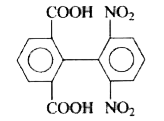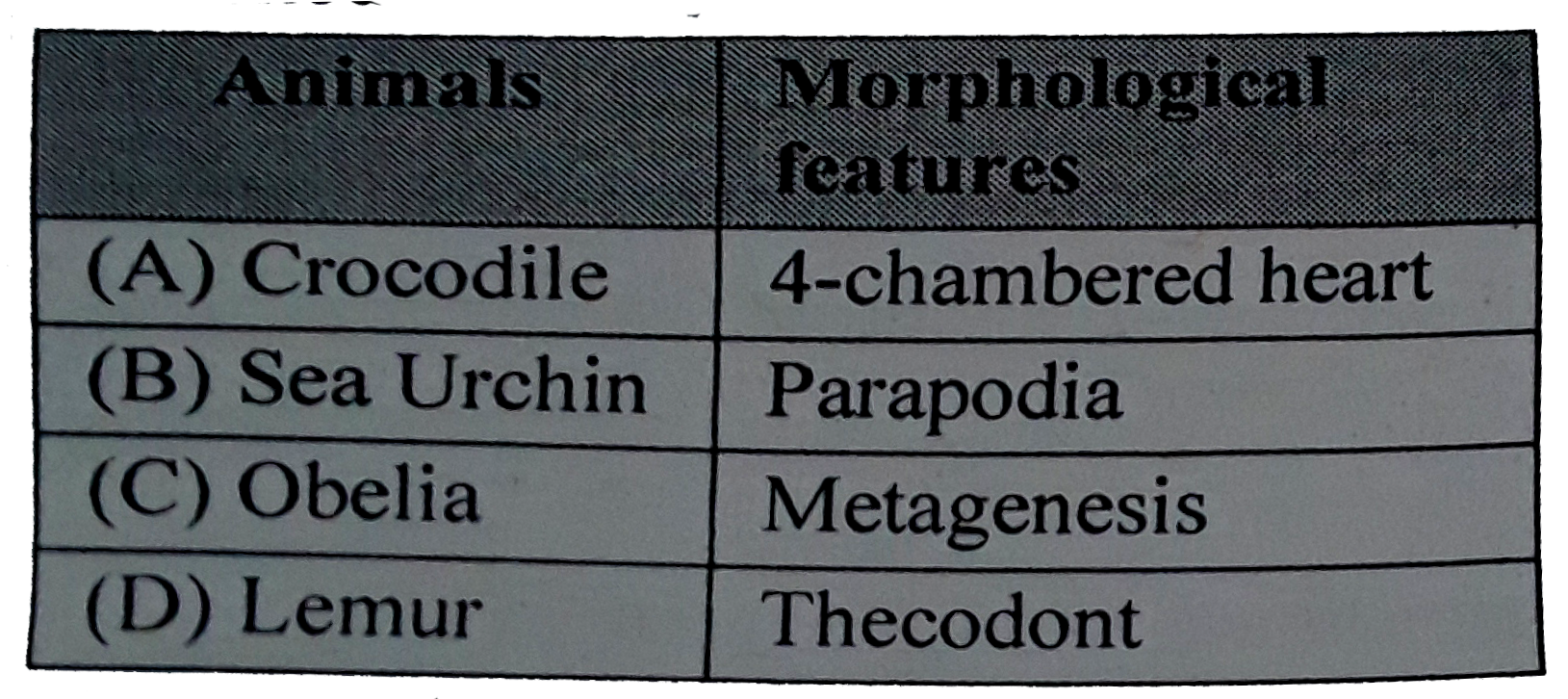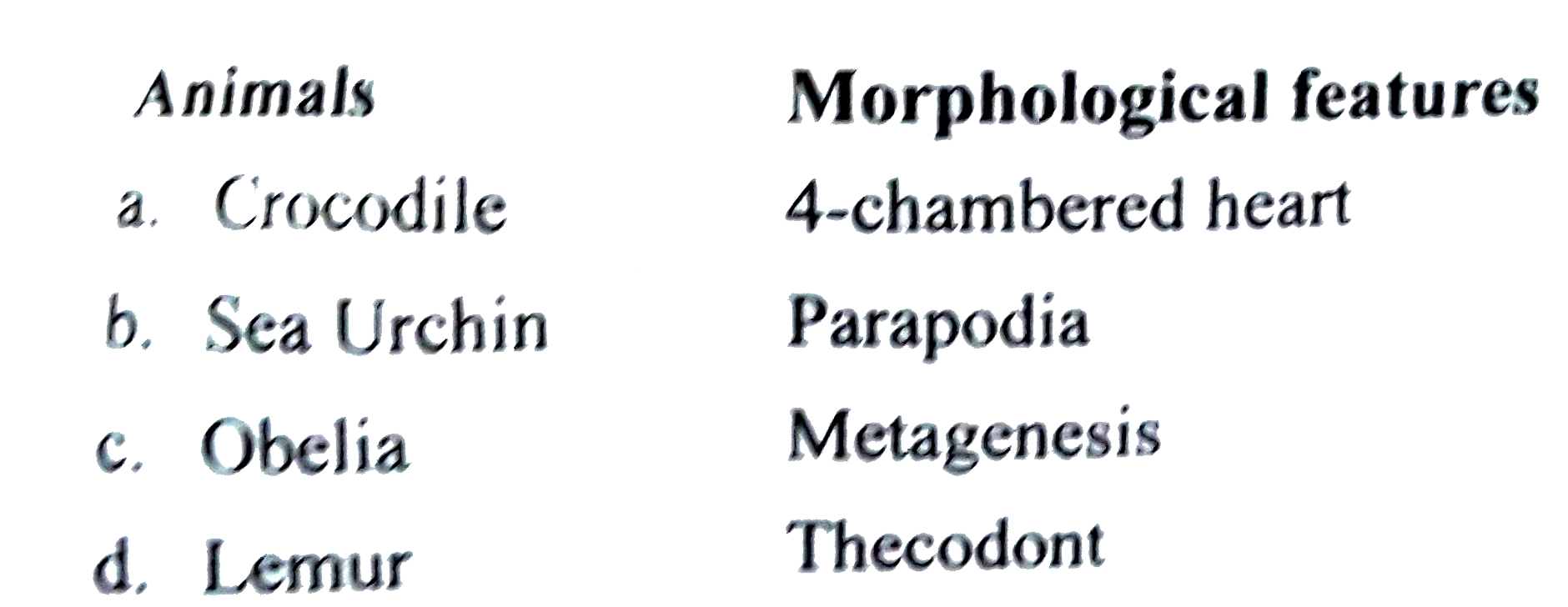Which of the following pairs is correctly matched?
CH3−CH=C=CH2 , optically active


 Optically inactive
Optically inactive
The correct Answer is:C
To determine which of the given pairs is correctly matched in terms of optical activity, we will analyze each compound step by step.
Step 1: Analyze Compound A
- Structure: The first compound is an allene with the structure CH3-CH2.
- Symmetry: In this structure, both terminal ends contain two similar hydrogen atoms (H and H).
- Conclusion: A plane of symmetry can be drawn through the molecule, indicating that it is optically inactive.
- Match: The option states that this compound is optically active, which is incorrect.
Step 2: Analyze Compound B
- Structure: The second compound is a cyclohexene derivative with two methyl groups.
- Symmetry: This compound also possesses a plane of symmetry that bisects the molecule through the two methyl groups and the center of the ring.
- Conclusion: Since there is a plane of symmetry, this compound is also optically inactive.
- Match: The option states that this compound is optically active, which is incorrect.
Step 3: Analyze Compound C
- Structure: The third compound is another allene with the structure H2N-C=C-CH3 and Cl.
- Symmetry: Here, the terminal carbons do not have any similar groups, meaning there is no plane of symmetry.
- Conclusion: This compound is optically active.
- Match: The option states that this compound is optically active, which is correct.
Step 4: Analyze Compound D
- Structure: The fourth compound is a biphenyl system with bulky substituents (NO2 and COOH).
- Symmetry: The bulky groups cause the two phenyl rings to adopt a three-dimensional arrangement, preventing a plane of symmetry.
- Conclusion: This compound is optically active.
- Match: The option states that this compound is optically inactive, which is incorrect.
Final Conclusion
After analyzing all four compounds, we find that:
- Compound A: Incorrectly matched (optically inactive)
- Compound B: Incorrectly matched (optically inactive)
- Compound C: Correctly matched (optically active)
- Compound D: Incorrectly matched (optically active)
Thus, the only correct match is Option C.
---
- Structure: The first compound is an allene with the structure CH3-CH2.
- Symmetry: In this structure, both terminal ends contain two similar hydrogen atoms (H and H).
- Conclusion: A plane of symmetry can be drawn through the molecule, indicating that it is optically inactive.
- Match: The option states that this compound is optically active, which is incorrect.
- Structure: The second compound is a cyclohexene derivative with two methyl groups.
- Symmetry: This compound also possesses a plane of symmetry that bisects the molecule through the two methyl groups and the center of the ring.
- Conclusion: Since there is a plane of symmetry, this compound is also optically inactive.
- Match: The option states that this compound is optically active, which is incorrect.
- Structure: The third compound is another allene with the structure H2N-C=C-CH3 and Cl.
- Symmetry: Here, the terminal carbons do not have any similar groups, meaning there is no plane of symmetry.
- Conclusion: This compound is optically active.
- Match: The option states that this compound is optically active, which is correct.
- Structure: The fourth compound is a biphenyl system with bulky substituents (NO2 and COOH).
- Symmetry: The bulky groups cause the two phenyl rings to adopt a three-dimensional arrangement, preventing a plane of symmetry.
- Conclusion: This compound is optically active.
- Match: The option states that this compound is optically inactive, which is incorrect.
After analyzing all four compounds, we find that:
- Compound A: Incorrectly matched (optically inactive)
- Compound B: Incorrectly matched (optically inactive)
- Compound C: Correctly matched (optically active)
- Compound D: Incorrectly matched (optically active)
Similar Questions
Knowledge Check
- Question 1 - Select One
Which of the following pairs are correctly matched ?
AnimalsMorphological features(i)Crocodile−4-chambered heart(ii)Sea urchin−Parapodia(iii)Obelia−Metagenesis(iv)Lemur−ThecodontA(ii),(iii) and (iv)B(i) and (iv)C(i) and (ii)D(i),(iii) and (iv)
Which of the following pairs are correctly matched ?
 View Solution
View SolutionWhich of the following pairs are correctly matched?
View SolutionWhich of the following pairs are correctly matched ?
 View Solution
View SolutionWhich of the following pairs are correctly matched ?
AnimalsMorphological features(i)Crocodile−4-chambered heart(ii)Sea urchin−Parapodia(iii)Obelia−Metagenesis(iv)Lemur−ThecodontView SolutionWhich one of following pairs is correctly matched?
View SolutionWhich one of the following is correctly matched ?
View SolutionWhich of the following pairs is not correctly matched ?
View Solution

